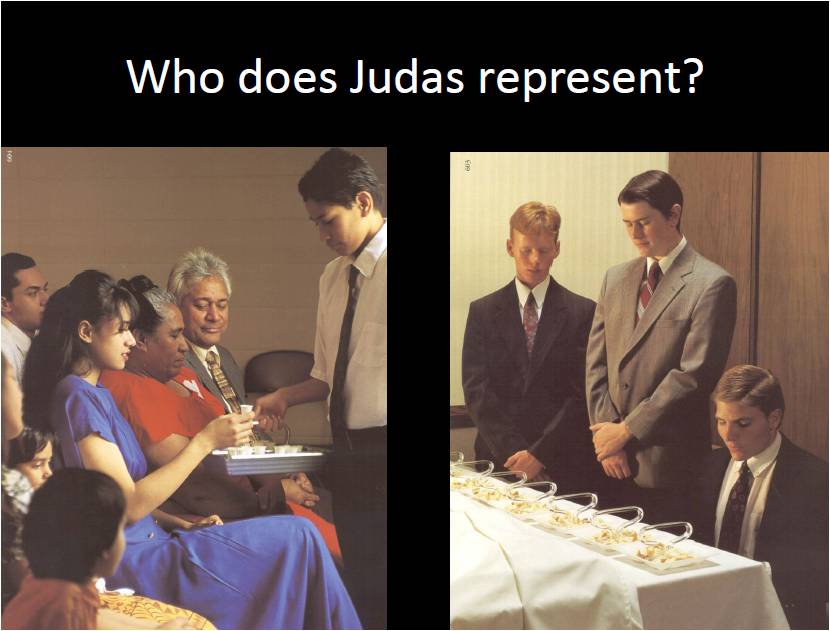John 13:20-30 show how Jesus treated Judas before Judas left to betray him. The apostles partook of the passover, and after Jesus washed the apostle’s feet we read the following:
Verily, verily, I say unto you, He that receiveth whomsoever I send receiveth me; and he that receiveth me receiveth him that sent me. When Jesus had thus said, he was troubled in spirit, and testified, and said, Verily, verily, I say unto you, that one of you shall betray me. Then the disciples looked one on another, doubting of whom he spake. Now there was leaning on Jesus’ bosom one of his disciples, whom Jesus loved. Simon Peter therefore beckoned to him, that he should ask who it should be of whom he spake. He then lying on Jesus’ breast saith unto him, Lord, who is it? Jesus answered, He it is, to whom I shall give a sop, when I have dipped it. And when he had dipped the sop, he gave it to Judas Iscariot, the son of Simon. And after the sop Satan entered into him. Then said Jesus unto him, That thou doest, do quickly (John 13:20-27).

It is important to understand what is taking place in this particular narrative. By extending a “sop”, Jesus is doing much more than simply offering food to Judas Iscariot. He is symbolically teaching an important gospel principle, one that is very difficult to apply in our lives. Donna Nielsen explains:
It was customary to place three small “loaves” of bread at each setting. These resembled modern tortillas or pancakes. Pieces of this bread were doubled up, spoon fashion, and used to scoop up the stews and sauces. By practice, this was done with much expert cleanliness and was not at all messy. When one prepared such a mouthful and handed it to another at the table, it was a sign of friendship. In some parts of the Middle East, this “sop” is called “the bread of friendship.” 1
Jesus showed perfect love towards Judas, even in the midst of his pending betrayal. This is difficult to emulate. Through this one act, Jesus demonstrated to his disciples that his love is more powerful that Judas’ hatred.

This brings us to another idea, one where we see ourselves symbolically as Judas. Each time we take the sacrament, we accept Jesus’ love for us. In one way, we are like Judas. The Savior extends his deepest love for us by offering the “bread of friendship” through the ordinance of the sacrament. The priest who performs the prayer over the sacrament represents Jesus Christ, putting the congregation under covenant to accept the terms of the covenant. The deacon who brings the sacrament to us also represents the Savior in that he offers us the bread and water in remembrance of Jesus’ body and blood which were shed for us.
Jesus extends his love to all. Even the to the most unholy of humanity does Jesus extend his arms of mercy (3 Nephi 30:2; Mosiah 10:11-18; Alma 26:5,22-33, 37; Jacob 6:4). This message is powerfully taught in the Book of Mormon through the course of the lives and missionary efforts of Alma and the sons of Mosiah as well. Extending mercy to the Judas’ of our lives is difficult, but in so doing, we become more like the Savior we wish to emulate.
Notes
1. Donna Nielsen, Beloved Bridegroom: Finding Christ in Ancient Jewish Marriage and Family Customs, Onyx Press, 1999, p. 83
